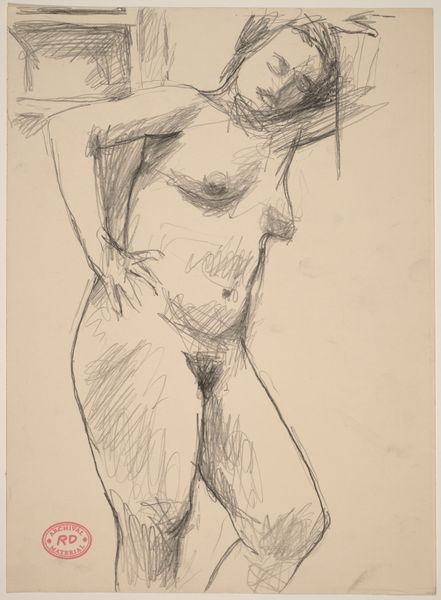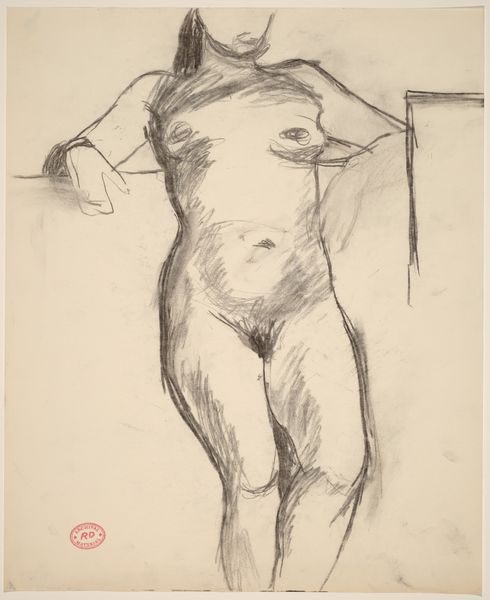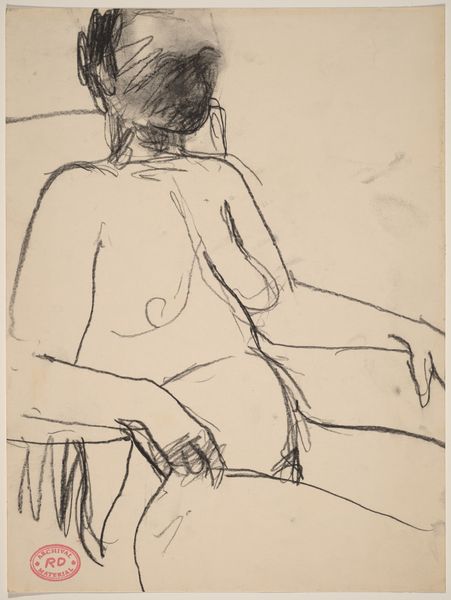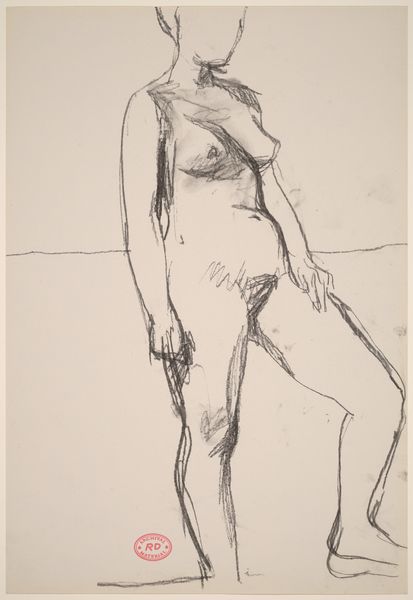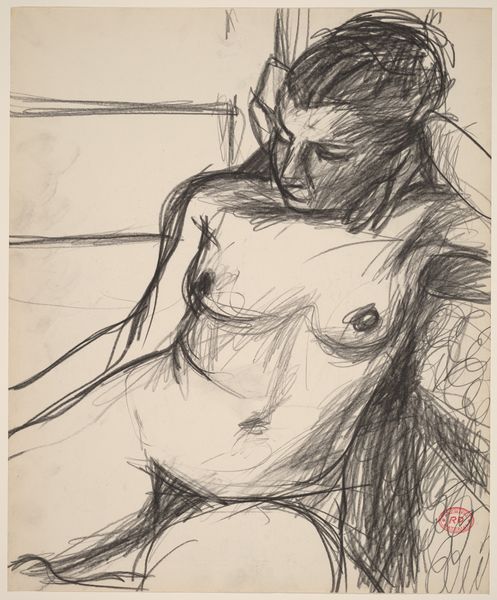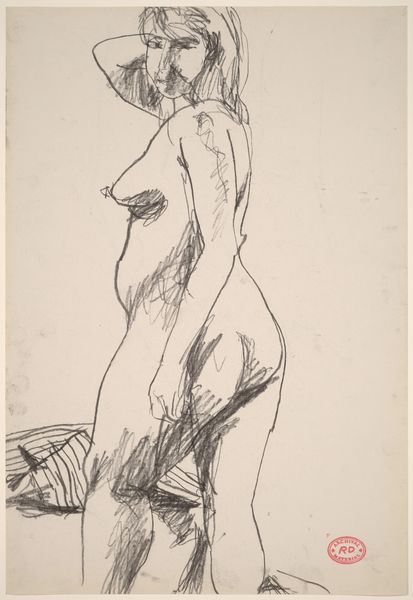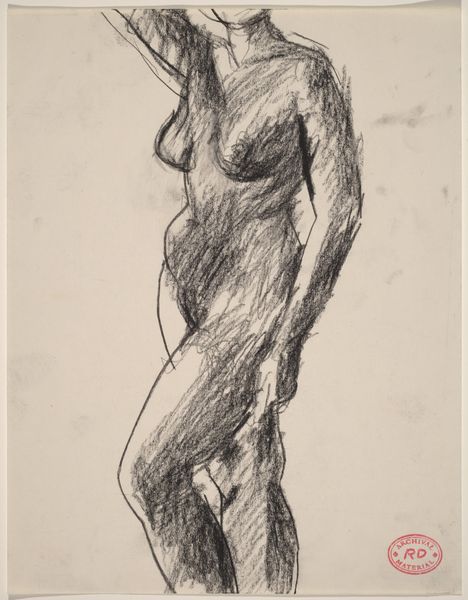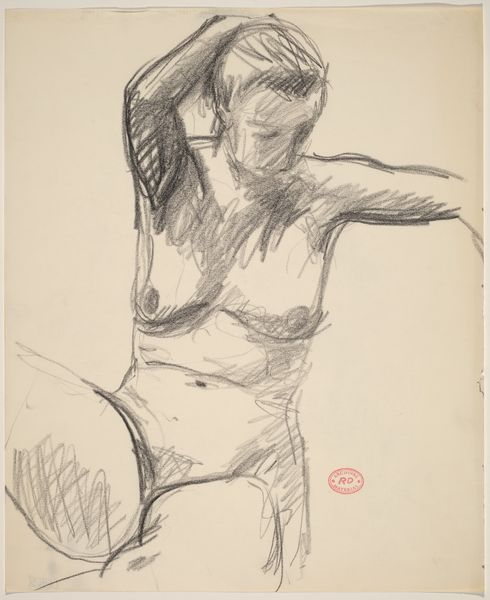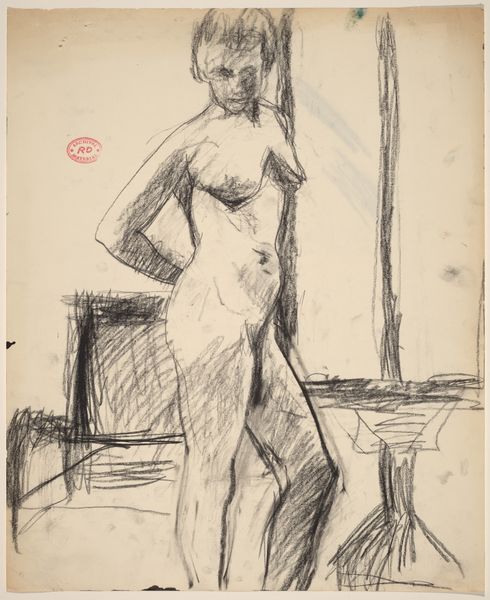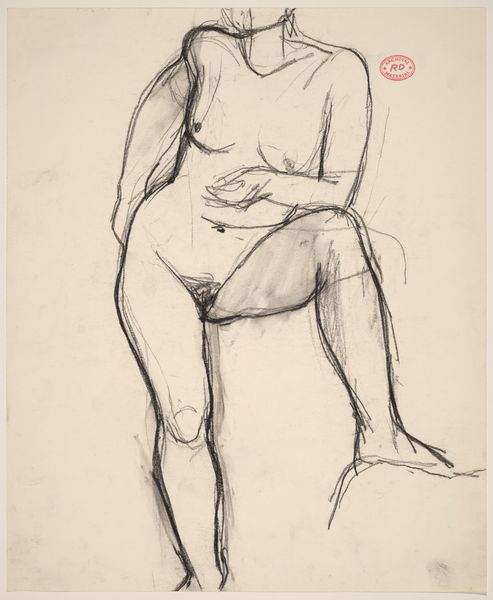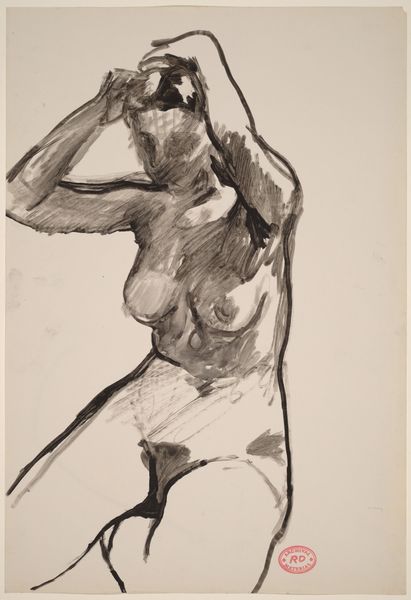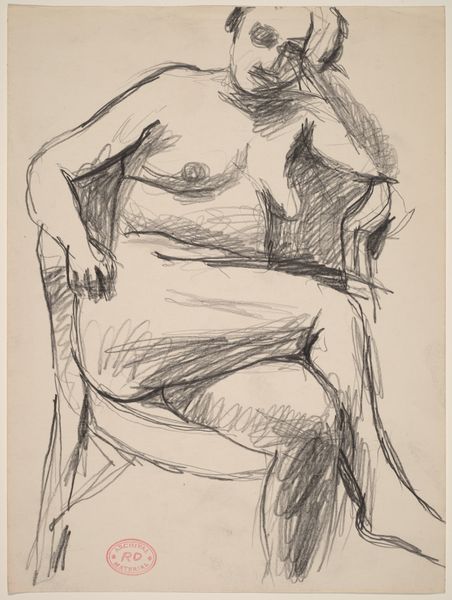![Untitled [standing nude looking down with right arm behind her head] by Richard Diebenkorn](/_next/image?url=https%3A%2F%2Fd2w8kbdekdi1gv.cloudfront.net%2FeyJidWNrZXQiOiAiYXJ0ZXJhLWltYWdlcy1idWNrZXQiLCAia2V5IjogImFydHdvcmtzLzk0YTMwODViLTkzNzItNGE1MS04NjE4LTljMjU3MTljZjAwOS85NGEzMDg1Yi05MzcyLTRhNTEtODYxOC05YzI1NzE5Y2YwMDlfZnVsbC5qcGciLCAiZWRpdHMiOiB7InJlc2l6ZSI6IHsid2lkdGgiOiAxOTIwLCAiaGVpZ2h0IjogMTkyMCwgImZpdCI6ICJpbnNpZGUifX19&w=3840&q=75)
Untitled [standing nude looking down with right arm behind her head] 1955 - 1967
0:00
0:00
drawing, pencil, charcoal
#
abstract-expressionism
#
drawing
#
figuration
#
bay-area-figurative-movement
#
pencil
#
charcoal
#
nude
#
modernism
Dimensions: overall: 43.2 x 27.6 cm (17 x 10 7/8 in.)
Copyright: National Gallery of Art: CC0 1.0
Curator: Richard Diebenkorn's "Untitled [standing nude looking down with right arm behind her head]," created sometime between 1955 and 1967. It is a charcoal and pencil drawing on paper. Editor: There's an immediacy to this drawing, almost vulnerable. The strokes feel raw, and the figure's pose—her head bowed, arm raised—creates a sense of introspective weariness. Curator: That's interesting. I find the formal qualities equally compelling. Diebenkorn uses hatching and cross-hatching to create volume and shadow. The negative space is almost as important as the figure itself, pushing against it, almost defining her by what it lacks. The necklace acts as an arabesque within the picture plane. Editor: I'm more curious about the cultural context. Abstract Expressionism was hitting its stride then, pushing against traditional representation, yet Diebenkorn revisits the figure. How does this artwork speak to shifting social attitudes towards the body, or the artistic expectations in the Bay Area during this time? What public function did these intimate drawings hold for the artist or the broader culture? Curator: The sketch reveals Diebenkorn's method, stripping it down to its essence and focusing more on geometric shapes. We are experiencing the dynamic balance between abstraction and figuration. Consider the contrast: light washes and dark, frenetic strokes of charcoal. It shows the artist is exploring form through line and shadow and texture as he simultaneously implies the contours of the figure. Editor: That's astute. It invites a discussion about how Abstract Expressionism, despite its non-representational tendencies, was very much a product of its time, reflecting post-war anxieties and shifting perspectives on the individual. A piece like this would likely find audiences receptive to personal narratives within these abstract gestures, giving it a role to humanize the period. Curator: The lack of detail actually strengthens it. What we have here is not a representation of the individual, but instead, a deconstruction of how the figure itself can communicate on canvas. Editor: It does, doesn’t it? These gestural markings, though minimal, open conversations about how our own individual experiences influence both the making and perception of art, making the artwork a very personal engagement. Curator: Precisely. Ultimately, its impact derives from the artist’s skill and from us allowing its stark lines and shadows to speak on their own terms. Editor: Yes, and maybe understanding its place in the flow of history adds another rewarding layer of interpretation, creating deeper understanding of ourselves as well.
Comments
No comments
Be the first to comment and join the conversation on the ultimate creative platform.
